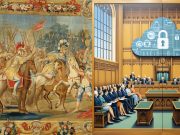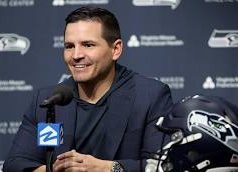 Two generations ago, his great-grandfather used the earnings made during the gold rush to open a shoe store in Seattle. Now, nearly one hundred years later, and with the grand re-opening of another shoestore, this one in virtual store space, Dan Nordstrom is reliving the transformation of the family business once again. And the sequel to this Seattle epic is every bit as adventurous as the original.
Two generations ago, his great-grandfather used the earnings made during the gold rush to open a shoe store in Seattle. Now, nearly one hundred years later, and with the grand re-opening of another shoestore, this one in virtual store space, Dan Nordstrom is reliving the transformation of the family business once again. And the sequel to this Seattle epic is every bit as adventurous as the original.
When this latest chapter began, young Dan was in no hurry to go to work in the family business, or even to college. At age 18, he took off on a fishing expedition in Ketchikan, Alaska. From there, he took his time, working in a ski shop in Colorado, taking on jobs in landscaping, trying his hand at carpentry and undertaking various construction jobs.
The family business was still a distant horizon.”I had my plans and went off and did them through my 20s,” said Nordstrom, now 38. “I decided I wanted to do something on my own — it wasn’t exactly clear what that was going to be.”
Only after he completed college, did Dan decide to take a closer look at the family business. “Eventually I realized what a good opportunity it would be, working at Nordstrom, and it became much more intriguing to me,” he said.
Style and fashion tend to be predictive by nature. As early as 1992, Nordstrom was beginning to explore the possibilities of selling product via interactive technology, but the subject of fascination in this case wasn’t the Internet, it was interactive TV.
“We had a sense that electronic commerce was going to exist,” said Dan Nordstrom. “The idea was very intriguing to me. Yet no one had a clear idea how that would look or work. Until Amazon.com emerged, few of us knew what selling on the Internet was supposed to look like,” he said.
Today, Nordstrom.com carries about 300,000 items online, and sales have climbed from $215 million in 1998, the year the site was launched, to $311 million in 2000. Those numbers are about the same as two Nordstrom stores make in a year.
According to Dan, the current Nordstrom.com site (which is currently undergoing offline renovaton) is in Release 3.0. The first two efforts took place with third party vendors — IBM, Microsoft and Sapient — and the integration was far from seamless. There was also the classic business model realignment. “The Web is all about speed and convenience. Copying your metaphors from your store business to online is fundamentally flawed. What you’ve got to do is start with the idea that it’s going to be super fast and easy.”
Going forward, how does Dan see the relationship between brick-and-mortar entities and dot-com ventures?
Nordstrom: The way we think about our businesses is that we have products and customers and a whole bunch of infrastructures. The same basic set of customers will have different “need states” at different points. For example, one need state is that you just got a call and you’ve got to travel to Maine and you need some big old boots and you don’t have any and you’re leaving at 6 o’clock tonight. Another need state is your girlfriend comes to town and you’re going to spend three or four hours out there cruising around shopping. That’s a fundamentally social recreational experience. So, we’ve got to have different channels for different customers.
Does Nordstrom have a personalization strategy?
Nordstrom: Personalization is almost a misnomer. Personalization takes other people’s behaviors and attributes them to you. In contrast, we’re using the word “individualization” because we’re doing a number of different things. One is keeping people in the system so that we will have our people in the stores. You may have a couple of salespeople in the store [whom] you know pretty well and [with whom] you have a relationship. We’ll provide a tool so that once we’ve got all the inventory in the store available on the site, we’ll send you a voice mail. We do tens of thousands of outbound phone messages every day to our customers. What we’ll be able to do in the future is put together an HTML mail that is put together by a salesperson, so they’ll go into the site and pick off the photo and text of an item, drop them into a template, and send it out to you. And maybe the salesperson does a voice-over describing it. We want our people to be an important part of your life. The Web is going to enable that, not replace it. Unlike most of our competitors, who are trying to eliminate the people from the mall because they just view it as an expense, we view it as a competitive advantage.
E-commerce is alive and well?
Nordstrom: This is my third cycle of hype and despair with e-commerce. The first cycle was in the spring of 1993 when I launched the Nordstrom direct business. I think some people get excited and rush into e-commerce without thinking it through, when the reality is that it’s a slow process. It’s going to take awhile, so we’ll just wait. I thought it could take three [years] to five years, which seemed like a long time in 1995. Well it’s five years later, and here we are. I just think these are big technologies. They’ve got to be deployed very broadly, and they get deployed over a longer period of time than most people’s attention span can stand.




















